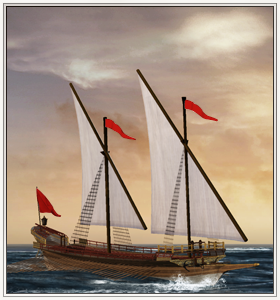Difference between revisions of "Galley (ETW Unit)"
m (→Factions) |
m (→Factions) |
||
| (One intermediate revision by the same user not shown) | |||
| Line 48: | Line 48: | ||
*[[Image:Mamelukes_FlagETW.png|25px]] [[Mamelukes (ETW Faction)|Mamelukes]] | *[[Image:Mamelukes_FlagETW.png|25px]] [[Mamelukes (ETW Faction)|Mamelukes]] | ||
*[[Image:Mexico_FlagETW.png|25px]] [[Mexico (ETW Faction)|Mexico]] | *[[Image:Mexico_FlagETW.png|25px]] [[Mexico (ETW Faction)|Mexico]] | ||
| + | *[[Image:Morocco_FlagETW.png|25px]] [[Morocco (ETW Faction)|Morocco]] | ||
*[[Image:NaplesSicily_FlagETW.png|25px]] [[Naples & Sicily (ETW Faction)|Naples & Sicily]] | *[[Image:NaplesSicily_FlagETW.png|25px]] [[Naples & Sicily (ETW Faction)|Naples & Sicily]] | ||
*[[Image:NewSpain_FlagETW.png|25px]] [[New Spain (ETW Faction)|New Spain]] | *[[Image:NewSpain_FlagETW.png|25px]] [[New Spain (ETW Faction)|New Spain]] | ||
| Line 59: | Line 60: | ||
*[[Image:Quebec_FlagETW.png|25px]] [[Quebec (ETW Faction)|Quebec]] | *[[Image:Quebec_FlagETW.png|25px]] [[Quebec (ETW Faction)|Quebec]] | ||
*[[Image:Russia_FlagETW.png|25px]] [[Russia (ETW Faction)|Russia]] | *[[Image:Russia_FlagETW.png|25px]] [[Russia (ETW Faction)|Russia]] | ||
| − | |||
*[[Image:Saxony_FlagETW.png|25px]] [[Saxony (ETW Faction)|Saxony]] | *[[Image:Saxony_FlagETW.png|25px]] [[Saxony (ETW Faction)|Saxony]] | ||
*[[Image:Scotland_FlagETW.png|25px]] [[Scotland (ETW Faction)|Scotland]] | *[[Image:Scotland_FlagETW.png|25px]] [[Scotland (ETW Faction)|Scotland]] | ||
Latest revision as of 15:56, 13 July 2020
 Galleys are propelled by both oars and sails, with cannons on firing platforms above the rowers’ heads.
Galleys are propelled by both oars and sails, with cannons on firing platforms above the rowers’ heads.
Overview
Although made obsolescent by the rise of broadside-firing sailing ships, galleys still have a place in naval warfare. The wind (or its lack) does not limit their movement and, if well handled, galleys can run rings around sailing ships. A galley has a reasonable amount of firepower for its size with cannons on a firing platform, or with a full gun deck above the rowers (on a design called a galleas). Up to five men work each oar; these are convicts (at best) or slaves (at worst). The life of a rower is hard, brutal and can be short: chained to their oars, they will go down with the galley if it founders.
The galley’s main disadvantage is its vulnerability in heavy seas: it would almost certainly sink in a full Atlantic seaway. It is most useful in relatively calm waters such as the Mediterranean or Baltic. These smaller seas also help keep a galley close to port: the large crew size means that they cannot venture far from a supply port, making them unsuitable for trans-oceanic voyages.
Historically, the galley survived for a long time as a practical warship in sheltered waters. The Ottomans, Swedes and Russians all used them in their battle fleets. As late as the 1790s they were still in use in the Baltic and the Mediterranean (C. S. Forrester has his famous fictional hero Captain Horatio Hornblower face Spanish galleons in one encounter). North African corsairs also used galleys, as they had a ready supply of European slaves to serve in them.
Details
Although galleys carry only three cannon, these are all very heavy hitters and on the stern or bow of the ship, allowing them to use hit-and-run tactics to great effect. Since they fire their cannons so close to the waterline, galleys have a nasty habit of sinking much heavier ships within a few shots. Galleys also have the advantage of having oars and therefore not relying on the wind as heavily as most other ships, (although choppy water almost completely immobilizes them). However, galleys have minuscule sail and hull strength, and a very small number of crew. Therefore, galleys simply cannot compete with heavier ships of the later eras and should be phased out by then.
Factions
 Great Britain
Great Britain United Provinces
United Provinces Austria
Austria Barbary States
Barbary States Bavaria
Bavaria Dagestan
Dagestan Gran Colombia
Gran Colombia Courland
Courland Denmark
Denmark France
France Genoa
Genoa Georgia
Georgia Greece
Greece Hannover
Hannover Hessen
Hessen Hungary
Hungary Ireland
Ireland Knights of St. John
Knights of St. John Louisiana
Louisiana Mamelukes
Mamelukes Mexico
Mexico Morocco
Morocco Naples & Sicily
Naples & Sicily New Spain
New Spain Norway
Norway Ottoman Empire
Ottoman Empire Italian States
Italian States Savoy
Savoy Poland-Lithuania
Poland-Lithuania Portugal
Portugal Prussia
Prussia Quebec
Quebec Russia
Russia Saxony
Saxony Scotland
Scotland Spain
Spain Sweden
Sweden Thirteen Colonies
Thirteen Colonies United States
United States Venice
Venice Westphalia
Westphalia Württemberg
Württemberg
